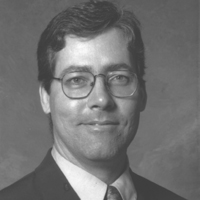
|
|
The Human Operating System as a model for Spirit
1. Process Philosophy a. a thing is what it does b. a recurring sequence of events results in an entity of process 1, this applies to apparently solid objects 2, this applies to immaterial objects like thought, emotion, and desire 3, Spirit is spiros or breath- ectoplasm and mysterious forces are not required to understand or experience spirit a, team spirit b, consciensce c, consciousness 2. Consciousness as a process a. brainwaves are too synchronous to result from local events spreading across the cortex b. the reticular activating system is like a radar that 'lights' up the cortex. c. we can recognize evoked potentials as an attunement of the brainstem to attend to novel stimuli d. consciousness has a rate of occurrence i.e. beta, alpha, and theta waves 1. fast brief glances 2. slow connected scans 3. The surface of the mind or Cortex a. the illusion of time 1, like a harmonic sequence past similar events are evoked from the background neural activity giving us the process of memory b. the process of sensation and perception 1,sensation 2, recognition, 3, discrimination 4, perceptual projection (which goves us the illusion of future) c. consciousness can be focused or allowed to travel beyond the window of sensations and perception (traditional societies are more likely to train people in the art of journeying 4. Desire a. most sensations and perceptions fade into the background becoming memories b. some sensations or patterns grow in intensity and evoke growing trains of thought. c. the growing train of associations often link to an ideal d. fantasy construction ocurrs as memories and beliefs are strung together in a series of steps by which our desired ideal may be accomplished. e. sites in the hypothalmus become active and evoke responses from the cortex (similar to consciousness, thus our desires seem to have a life of their own and may at times behave as if they have their own process of consciousness) 5. Evaluation (introduction to the flowchart of the thought process) a, we may decide to act (and if all goes well our attention is free to attend to other things) b, we may decide to not act (and the desire energy may reprocess the fantasy producing temptations and rationalization) c, we may decide to wait (where upon our muscle tension and glands may prepare to act and this can produce further sensations 5. Emotion a, the wait loop produces sensations which evoke further thoughts and ideas that we experience as feelings often accompanied by self talk b, attitudes result from habitual assumptions that we have learned and represent abbreviated evaluations that result in emotions c, the flowchart outlines opportunities for intervention in undesirable emotions 1, cognitive strategies 2, counseling strategies for uncovering assumptions underlying attitudes and questioning ideals 3, physical interventions such as activity or medications 6. The city of the Mind a. each desire has its own channel or flowchart b. each desire promotes its own agenda and this internal dialogue accompanied by fantasys results in our experience of thought. c. Desire results in basic spiritual processes and ideals d. The Universal Key is a cross cultural map connecting desire energy with various spiritual and psychological schemas 1, judeaochristian conscience soul and devil 2, Transactional analysis parent adult child 3, Freudian superego, ego, and id (with libido and thanatos) 4, Jungian archetypal processes 4, Shamanic directions and elements 5, chakras and kelahs 7. Soul Loss and recovery a, the traditional fundamentalist loss and recovery of conscience b, the stages of development of lost and recovered energies in positive or negative ways 1, elemental, 2 aesthetic romantic, 3 intellectual, 4 wisdom c, other models (the multiple soul model) egyptian and shamanic ideas of 3-7 souls. 8. The Holistic Physician as Shaman
Graduate of UNM School of Medicine 1995 Taught Family Medicine for 3 years Worked in a busy ER for 3 years Is currently working at an Integrative Medicine Clinic doing Family and Holistic Medicine
To View Comments or Join the Conversation: |
Most Viewed of all Products
NLP Writing Tools for Success
|

